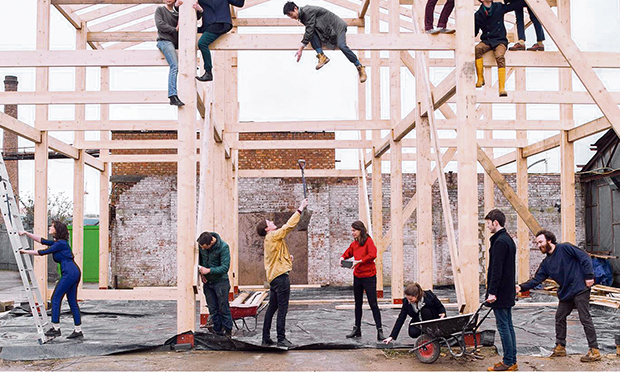Manufacturing discontent: where has all the industrial space gone?

Industrious: members of East London-based architecture collective Assemble. Photograph: Assemble
Finding space should not be a problem for Assemble, a group of 18 architects and designers based in the East End, who recently won this year’s £25,000 Turner Prize. But the collective is on an urgent hunt for a new home.
“We were lucky in finding our space, we took advantage of an opportunity that arose during the lead up to the Olympics, which was meant to be a temporary arrangement,” explains Mathew Leung, one of the members of Assemble
“We’re still here in an old industrial unit almost five years later, but are urgently on the look out for a new home as the site is shortly being developed.”
Assemble is not the only industrial workers to feel the squeeze on space and finances.
Between 2006 and 2013, London lost about 600 hectares of industrial land, according to research by Green party London Assembly member Jenny Jones. That is the equivalent of around 750 football pitches worth of employment land.
A growing population and seemingly never ending housing crisis are forcing up rents in the housing sector, which is putting the squeeze on industrial space too.
All too often artists are being booted out of studios, which are then being turned into homes – proving far more lucrative for landlords.
But this is happening at a time when niche manufacturing is flourishing. Every week it seems a new craft brewery or furniture shop appears; bakers and bike builders are on a roll.
The percentage of people in London employed in creative industries is steadily growing, according to research by innovation charity Nesta.
And it is not just artisan producers that need more space in which to work but the likes of scaffolding companies and mechanics too.
“Like many other businesses, we’re now faced with the challenge that the shortage of available industrial land in London throws up: trying to find the balance between reasonable rent, long term security and a decent location with good connections,” says Lueng.
“There are plenty of people in the same boat and some who have given up on London all together.”
East Londoner Krissie Nicolson set up the East End Trades Guild (EETG) to represent small independent traders. She brought her son up in Hackney for 20 years before they were priced out of the area.
“I realised that all small businesses and manufacturers in East London are having exactly same issue,” she said.
“We thought working together under an umbrella would give more voice and power to industry in London.”
“We want to make local and central government listen to what impacts on them and raise cultural awareness of social and economic benefits that these enterprises give to local community.”
Small businesses and local manufacturers provide invaluable jobs to the local community, she says.
“They create very important entry-level jobs. If you wanted to start brewery or scaffolding company then you would start with an entry-level job at another company to see how it works. Then when you start up on your own, you take on local people at entry level.
“If we lost this space it would make a bad situation worse for the community.”
The EETG is holding an Ideas Workshop on 18 March, bringing together various experts to develop solutions for accommodating London’s future industry, whilst delivering the housing London needs.
“We need to come up with better design solutions,” says Nicolson. “We have plenty of smart enough people in London to think about mixed use industrial and residential schemes.
“Why does it all have to be housing?”
